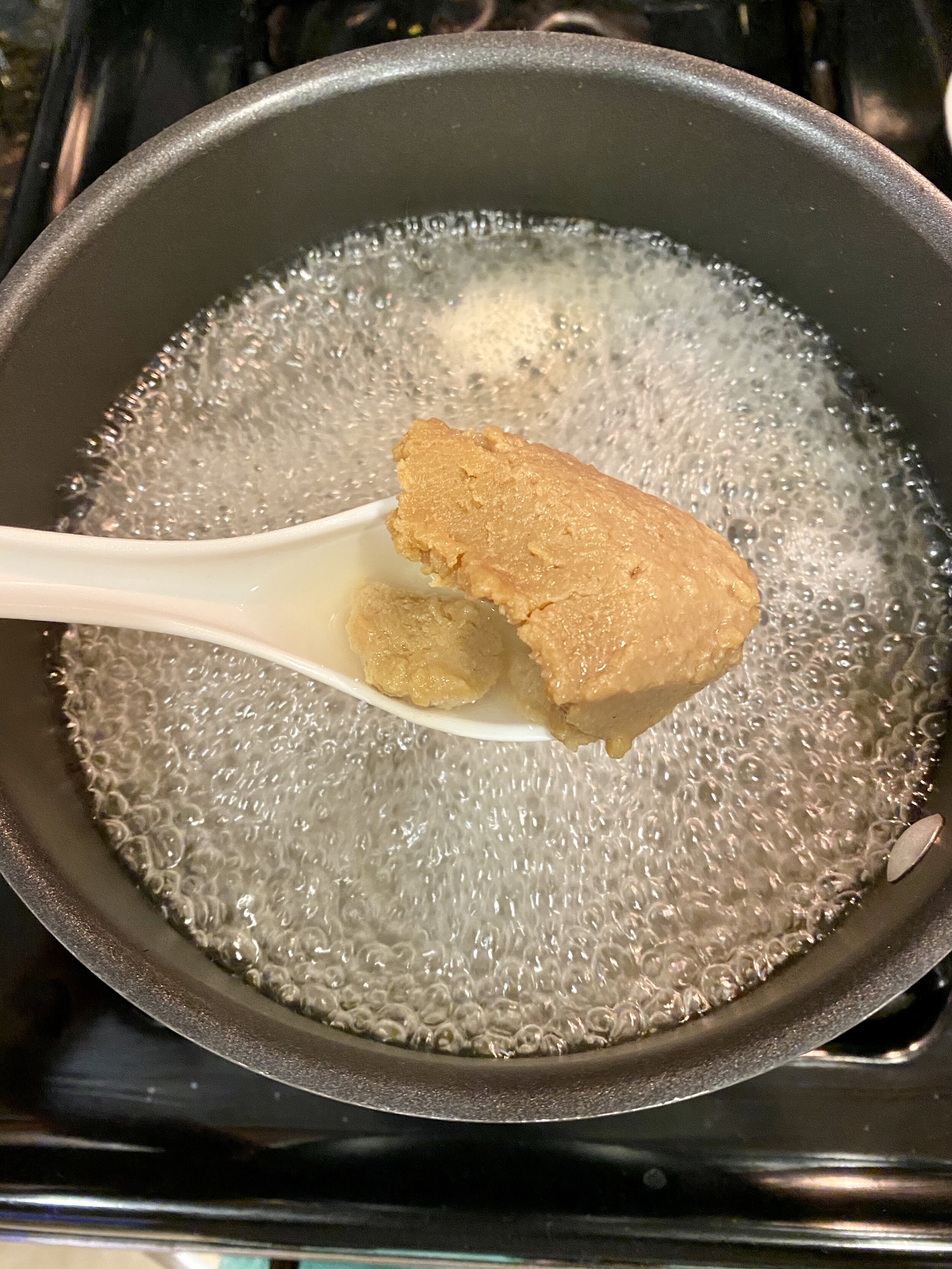Everyday Miso Soup
Easy Miso Soup
Learn how to make classic miso soup the easy way!
Miso soup is one of those magical dishes that feels both comforting and elegant. It might remind you of the start of a fancy omakase meal, where the delicate flavors of homemade dashi set the tone. Or maybe it’s the cozy beginning of a Japanese-style dinner at home.
In our family, it’s a must-have during snowy Colorado holidays—steaming hot and served over plain white rice.
Whether you’re making a simple three-ingredient version or loading it up with mushrooms, tofu, and noodles, this recipe will show you how to master the basics of miso soup.
Once you get the foundation down, you can customize it however you like.
Why You’ll Love This Miso Soup
Quick and easy – Ready in under 30 minutes
Customizable – Add your favorite proteins or vegetables
Comforting and healthy – Light, nourishing, and packed with umami
Perfect for beginners – Learn the traditional method, step-by-step
What is dashi?
Dashi - this is the base of the soup and many other Japanese dishes. It’s a broth that’s made from kombu (kelp) and bonito flakes. Read my article on making dashi here. It includes an option for homemade dashi or an instant version!
I usually choose this method since I often make it on the weeknights as a simple dinner after I get home from work. I use the Ajinomoto Hon Dashi packets to make mine. If you’re worried about MSG, don’t be and read my post about it.
Master the Basics, Then Make It Your Own
This recipe is designed to show you that miso soup is easy, flexible, and endlessly customizable. Once you’ve learned the basics—dashi, miso, and timing—you can start playing with different ingredients, flavor profiles, and proteins.
Try adding:
Seaweed (like wakame)
Clams or shrimp
Shiitake mushrooms
Protein like chicken thighs or shrimp
Noodles like soba, udon or ramen
Kimchi (for a fusion twist)
Shoyu marinated eggs
Add the Miso (The Right Way!)
When the dashi is hot but not boiling, take a spoonful of miso paste and dissolve it in a ladle or small bowl with some of the hot dashi. Whisk or stir until it becomes a smooth liquid, then mix it back into the pot. This gentle method keeps the miso from clumping and helps preserve its flavor and probiotics.
Taste and adjust—start with 3 tablespoon of miso for 5 cups of water and add more if needed. I like Hikari white miso for everyday soup. Here’s a quick miso breakdown:
White miso (shiro) – Mellow and slightly sweet, great for soup
Yellow miso (shinshu) – Balanced, also good for soup
Red miso (aka) – Rich and salty, best for marinades or hearty stews
More Questions? Check out the FAQ’s
Can I make miso soup without dashi?
Technically yes, but it won’t have the same umami depth. Try adding mushroom broth or kombu water as an alternative.
Can I use red miso for this recipe?
You can, but it has a much stronger, saltier flavor. Start with less and adjust.
Is miso soup vegetarian?
If you use kombu-based dashi (not bonito), yes! Just check your miso label for any added ingredients.
How long does miso soup last?
Up to 3 days in the fridge. Reheat gently—don’t boil—to keep the miso flavor delicate. Miso begins to lose it’s essence and fragrance after being heated up multiple times.
Easy Miso Soup Recipe

Easy Miso Soup
Learn how to make miso soup at home the traditional way! This simple miso soup recipe is quick, flavorful, and endlessly flexible—perfect for beginners and weeknight dinners.
Ingredients
Instructions
- In a medium pot, bring 5 cups of water and 1.5 tsp of dashi powder to a low boil.
- If you're adding any root vegetables or starches (like sliced daikon), add them now so they have time to soften.
- Add 3 tbsp of miso paste to a small bowl, add a ladle of the dashi water to the bowl. Thoroughly mix or whisk the miso into the broth. This ensures a smooth miso soup.
- When all the miso has dissolved into the water, add the mixture into your soup pot. Stir to incorporate.
- Taste test to determine if you need more miso paste.
- Add in the sliced tofu.
- Serve the soup into small miso bowls and garnish with sliced green onions and togarashi!
Nutrition Facts
Calories
76Fat
3 gSat. Fat
0 gCarbs
6 gFiber
2 gNet carbs
5 gSugar
2 gProtein
6 gSodium
508 mgCholesterol
0 mgNutritional information provided here is based on estimates and may vary depending on the brand and preparation methods used. Always check food labels for accurate nutritional details.



